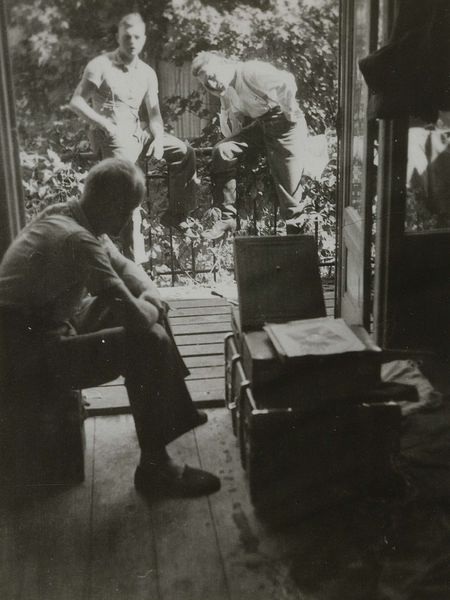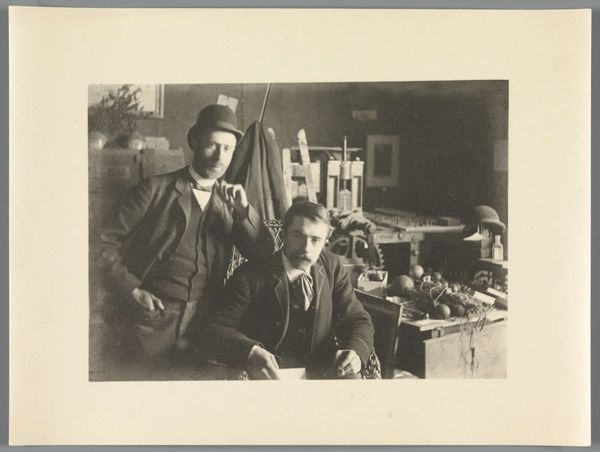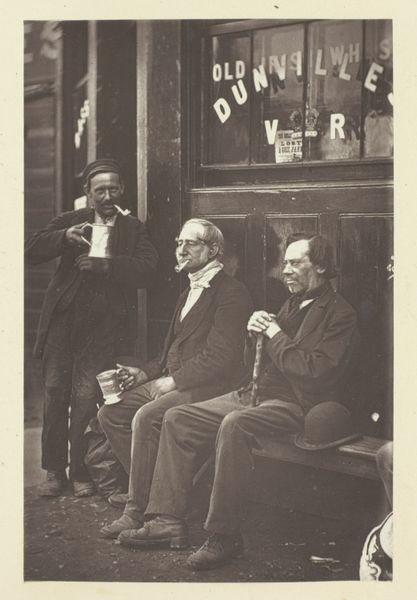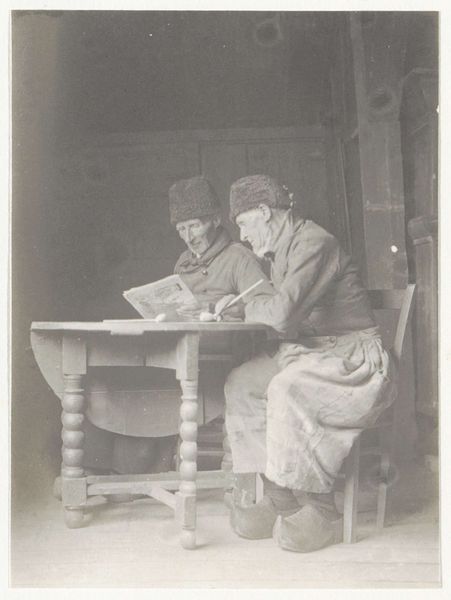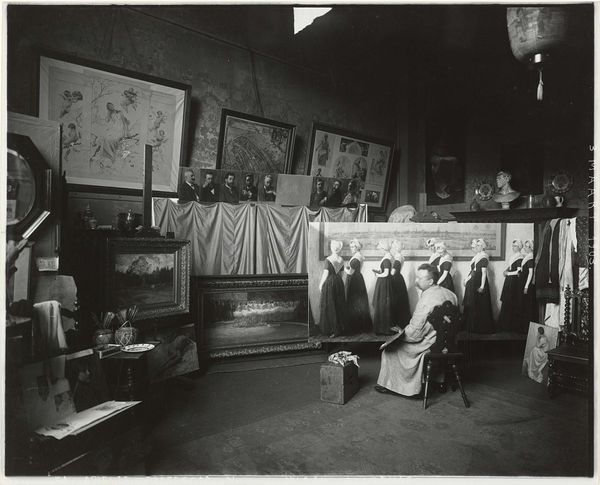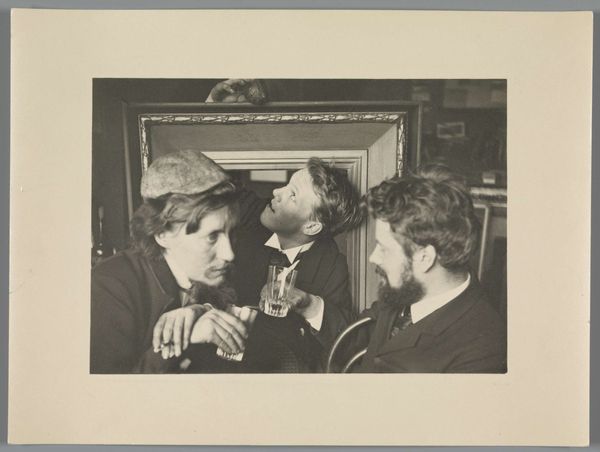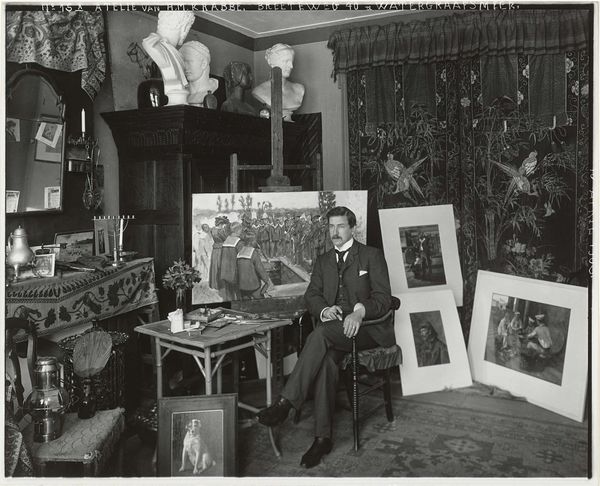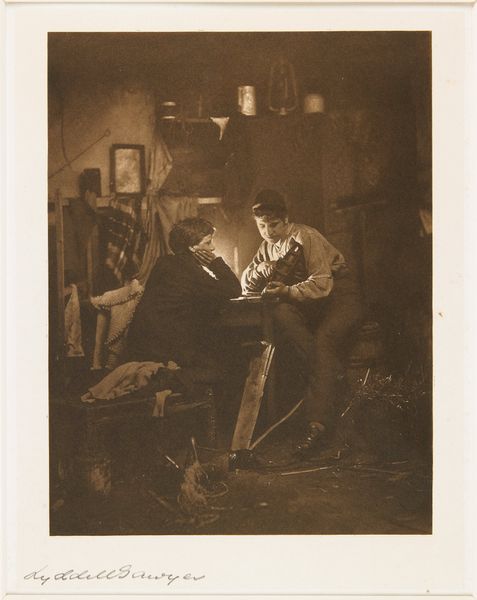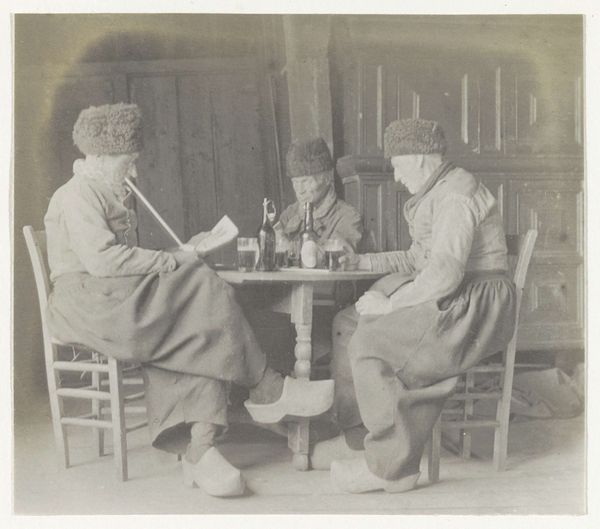
The River East of Tower Bridge, at Charlie Brown's, Limehouse 1945
0:00
0:00
photography, gelatin-silver-print
#
portrait
#
photography
#
intimism
#
gelatin-silver-print
#
genre-painting
#
modernism
#
realism
Dimensions: image: 22.86 × 19.69 cm (9 × 7 3/4 in.) sheet: 24.77 × 19.69 cm (9 3/4 × 7 3/4 in.)
Copyright: National Gallery of Art: CC0 1.0
Curator: The atmosphere in this photograph is quite something, wouldn't you agree? The grainy texture and deep shadows create such a sense of intimacy... Editor: It absolutely does. This gelatin silver print, titled "The River East of Tower Bridge, at Charlie Brown's, Limehouse", was captured by Bill Brandt in 1945. The scene depicts three figures within a pub interior. The emotional landscape seems as rich as the physical one. Curator: Note how Brandt contrasts the embracing couple with the solitary man. He is placed opposite them, a cigarette hanging from his lips. A palpable feeling of melancholy or perhaps resignation emanates from him. What do you think Brandt was conveying here? Editor: I see a deeper connection to the wartime experience. The couple may represent hope and resilience, but the lone man speaks of isolation, a feeling common in the aftermath of war. The portraits and nautical art on the wall seem to reference authority figures and escapism from this experience, further compounding that contrast you highlighted. Curator: Yes, there's an undeniable tension present. You mention those symbols on the wall. The art and portraits seem like a deliberate choice to juxtapose their public roles with private emotional states, a running theme for Brandt during that time, using contrast to show public expectation versus reality. Editor: I agree. The dark setting of Charlie Brown's, a pub frequented by sailors, resonates with its proximity to the river. That becomes symbolic for voyages both taken and yearned for; escape as an aspiration and also perhaps as a coping mechanism to leave difficult memories behind. The romantic couple seem almost dreamlike against this grittier tableau. Curator: These details and their arrangement tell a story far more complex than just a moment captured. Considering this was created right after WWII, I wonder what social commentary we can uncover, given how social life was irrevocably changing during that time in London. Editor: Brandt has masterfully created a tableau of hope, longing, and solitude. By examining this photograph through iconography, we reveal profound insights into the cultural and psychological landscape of a specific place during a significant moment in time. It continues to speak volumes, decades later.
Comments
No comments
Be the first to comment and join the conversation on the ultimate creative platform.


